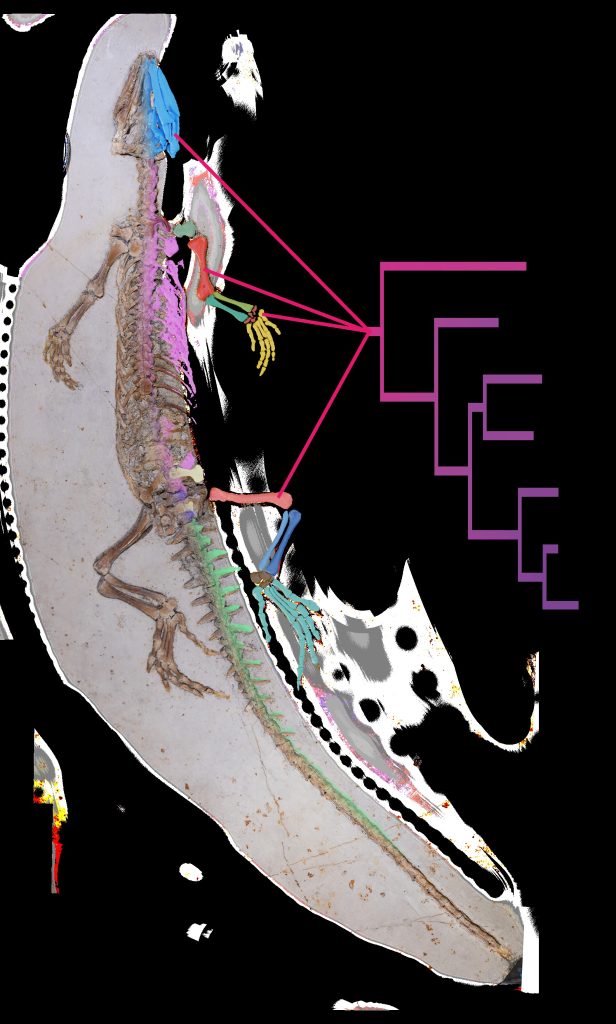Organisers: Victor Beccari1, Alexandre Guillaume2,3, Alfred Lemierre4, Andrea Villa5
1 SNSB – Bayerische Staatssammlung für Paläontologie und Geologie, Munich, Germany. Email: victor.beccari@gmail.com
2 GeoBioTec, Department of Earth Sciences, NOVA School of Science and Technology, Universidade Nova de Lisboa, Campus de Caparica, P-2829 516 Caparica, Portugal. Email: alexandre.guillaume.763@gmail.com
3 Museu da Lourinhã, Rua João Luís de Moura 95, 2530-158 Lourinhã, Portugal.
4 Muséum National d’Histoire Naturelle, 43 rue Buffon, 75005 Paris, France. Email: alfred.lemierre@outlook.com
5 Institut Català de Paleontologia Miquel Crusafont, Universitat Autònoma de Barcelona, Edifci ICTA-ICP, c/ Columnes s/n, Campus de la UAB, 08193 Cerdanyola del Vallès, Barcelona, Spain. Email: andrea.villa@icp.cat

ABSTRACT:
When it comes to the small world of the Mesozoic, lissamphibians, lepidosaurs, and other small amphibians and reptiles have been studied since the beginning of palaeontology. However, these clades are often misrepresented and overlooked. This led to a biased representation, with described specimens being either fossils preserved in slabs but often deformed and hard to interpret, or isolated fragmented bones, hard to identify. The early evolutionary history and geographical dispersal of several taxa remain, thus, unknown, even though all major modern clades appeared and radiated during the Mesozoic.
New approaches and methodologies are now bringing new insights into amphibians and small reptiles studies. The recent democratization of imaging technology, such as microCT-scanning, allows us to capture details never seen before in fossils preserved both in slabs and as isolated remains, and reconstruct those which were crushed and deformed. New characters and data can be implemented and used in new phylogenetic models and statistical tools, such as Bayesian Inference, ecological niche modeling, and Geometric Morphometrics, allowing us to understand the Mesozoic diversification of these animals.
This thematic session aims to highlight the most recent studies on the small herpetofauna from the Mesozoic, including lissamphibians, lepidosauromorphs, and other small reptiles. We encourage contribution using recent approaches in palaeontology, but also studying this group in previously poorly reported areas. Indeed, these animals achieved a global distribution matching what is observed nowadays during the Mesozoic, but their fossil records remain scarce in some regions of the globe for certain periods of time. Therefore, description of new material is also invited as this gives new inputs on the evolutionary history and palaeobiogeography of these groups.
CONTRIBUTIONS:
Coming soon!
